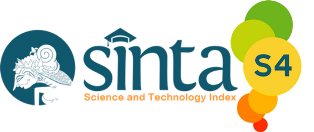Optimalisasi Manajemen Humas dalam Meningkatkan Kompetensi Guru dan Siswa melalui Kerja Sama Eksternal
DOI:
https://doi.org/10.21580/jawda.v5i2.2024.23336Keywords:
Public Relations Management, Cooperation, ExternalAbstract
This research is motivated by the high unemployment rate of vocational high school graduates which is one of the main problems in the world of vocational education in Indonesia. This is inseparable from the incompatibility of graduate competencies with industry needs. In addition, cooperation with industry that is not optimal and the inequality in the number of cooperation between departments also worsens the situation. In this condition, competition between vocational schools has become increasingly difficult to force each school to continue to improve the quality of its education. This study uses a descriptive qualitative method with a case study approach. Data collection is carried out through interviews, observations, and documentation. After that, the data is analyzed by reducing, presenting, and drawing conclusions. The results of the first planning research set the goals of the cooperation to be carried out. Second, update information, make an MoU, and make a timeline for coordination meetings and report results. The implementation of public relations in building the first cooperation of public relations carries out cooperation with industry in an effort to improve teacher competence through training and student competence through street vendors and training. Second, public relations in updating information through offline and online. The three public relations agencies have implemented many MoUs, there are 18 MoUs carried out by public relations. Fourth, in the implementation of coordination meetings with school structures, they are carried out every Monday, while internal public relations meetings are held once a month. The first evaluation is to re-check that the cooperation carried out is in accordance with the vision and mission, the second in evaluating the update of public relations information involves departments to participate in evaluating. Third, the evaluation of the MoU is carried out when the cooperation period has expired, which is every two years. The four evaluation techniques used by public relations are two, namely oral techniques and written techniques. The impact of the collaboration with external parties is an increase in teacher competence through the internship program. Students benefit from Field Work Practice (PKL) programs that are relevant to industry needs. Further research could focus on the direct evaluation of the impact of cooperation with industry on job skills and the level of graduate absorption in the job market.
Downloads
References
Abubakar, Rifa’i. Pengantar Metodologi Penelitian. yogyakarta: SUKA-Press UIN Sunan Kalijaga, 2021.
budi santoso. Manajemen Sumber Daya Manusia: Membangun Tim Yang Solid Dan Efektif. Yogyakarta: penerbit andi, 2021.
Dakir. MANAJEMEN HUMAS DI LEMBAGA PENDIDIKAN ERA GLOBAL. Edited by Editor: Abdul Qodir. Yogyakarta: t K-Media, 2018.
Dalmia, Dalmia, and Fiptar Abdi Alam. “Evaluasi Program Model Context Dan Input Dalam Bimbingan Konseling.” Jurnal Bimbingan Konseling Dan Psikologi 1, no. 2 (2021): 111–24.
Dkk, Salim HS. Perancangan Kontrak &Memorandum of Understanding (MoU). Jakarta: Sinar Grafika, 2017.
Fenti hikmawati. Metodologi Penelitian. Depok: PT Raja Grafindo Persada, 2020.
Hadi, Abdul. “Perkembangan Dan Konsep Dasar Manajemen Humas Dalam Dunia Pendidikan: Tinjauan Historis.” At- Ta’lim : Jurnal Pendidikan 4, no. 02 (2018).
Indonesia, PR Indonesia - Jakarta: Pemerintah Republik, and undefined 2003. “Undang-Undang Republik Indonesia Nomor 20 Tahun 2003 Tentang Sistem Pendidikan Nasional.” Peraturan.Bkpm.Go.Id, 2006.
Jefkins, F. Dasar-Dasar Public Relations. Jakarta: Erlangga., 2003.
Khoiruddin Muchtar dan Dedi Herdiana. “Peran Dan Strategi Humas Dalam Pembentukan Citra Perguruan Tinggi Islam.” Anida 15, no. 2 (2016): 317–38.
Kusumastuti, Adhi. Metode Penelitian Kualitatif. Semarang: lembaga pendidikan sukarno presindo (LPSP), 2019.
Mukhlason, Akhmad, Titiek Winanti, and Eppy Yundra. “Analisa Indikator Smk Penyumbang Pengangguran Di Provinsi Jawa Timur.” Journal of Vocational and Technical Education (JVTE) 2, no. 2 (2020): 29–36. https://doi.org/10.26740/jvte.v2n2.p29-36.
Prabandari, Diah Ayu, Ahmad Supriyanto, Ahmad Yusuf Sobri, and Rahmat Fadhli. “Strategi Humas Meningkatkan Partisipasi Masyarakat Dalam Kegiatan Sekolah” 3, no. 2 (2021): 179–91.
Ridwan, Dede, Bidang Pendidikan, Biro Kesra, Setda Provinsi, Jawa Barat, Vina Dwiyanti, Jl Diponegoro, and No 22 Bandung. “Missmatch Industri Dan SMK: Fenomena SMK Penyumbang Angka Pengangguran Tinggi.” Journal Innovation in Education (INOVED) 2, no. 1 (2024): 196–204.
Sari, Genny Gustina, and Gasela Hardianti. “Implementasi Excellence Public Relations Dalam Pengelolaan Konflik Oleh Energi Mega Persada Bentu Limited.” CoverAge: Journal of Strategic Communication 11, no. 2 (2021): 67–78. https://doi.org/10.35814/coverage.v11i2.2017.
Soyusiawaty, Dewi. “Strategi Humas Dalam Menjalin Good Relationship Dengan External Stakeholders UAD.” Komuniti : Jurnal Komunikasi Dan Teknologi Informasi 8, no. 5 (2017): 102–11. https://doi.org/10.23917/komuniti.v8i5.2846.
Statistic Indonesia Agency. “Keadaan Ketenagakerjaan Indonesia Februari 2024.” Berita Statistik Indonesia 05, no. 28 (2007): 1–5.
Suryana, A. Manajemen Public Relations & Media Komunikasi. Bandung: Simbiosa Rekatama Media, 2008.
Wina Puspita Sari dan Asep Sugiarto. ““Fungsi Dan Peran Humas Di Lembaga Pendidikan.” Jurnal Communicology 7, no. 01 (2019): 49.
Zulkarnain Nasution. Manajemen Humas Di Lembaga Pendidikan. Malang: UMM Press, 2006.
Downloads
Additional Files
Published
Issue
Section
License
Authors who publish with this journal agree to the following terms:
Authors are able to enter into separate, additional contractual arrangements for the non-exclusive distribution of the journal's published version of the work (e.g., post it to an institutional repository or publish it in a book), with an acknowledgement of its initial publication in this journal.
Authors are permitted and encouraged to post their work online (e.g., in institutional repositories or on their website) prior to and during the submission process, as it can lead to productive exchanges, as well as earlier and greater citation of published work (See The Effect of Open Access).












